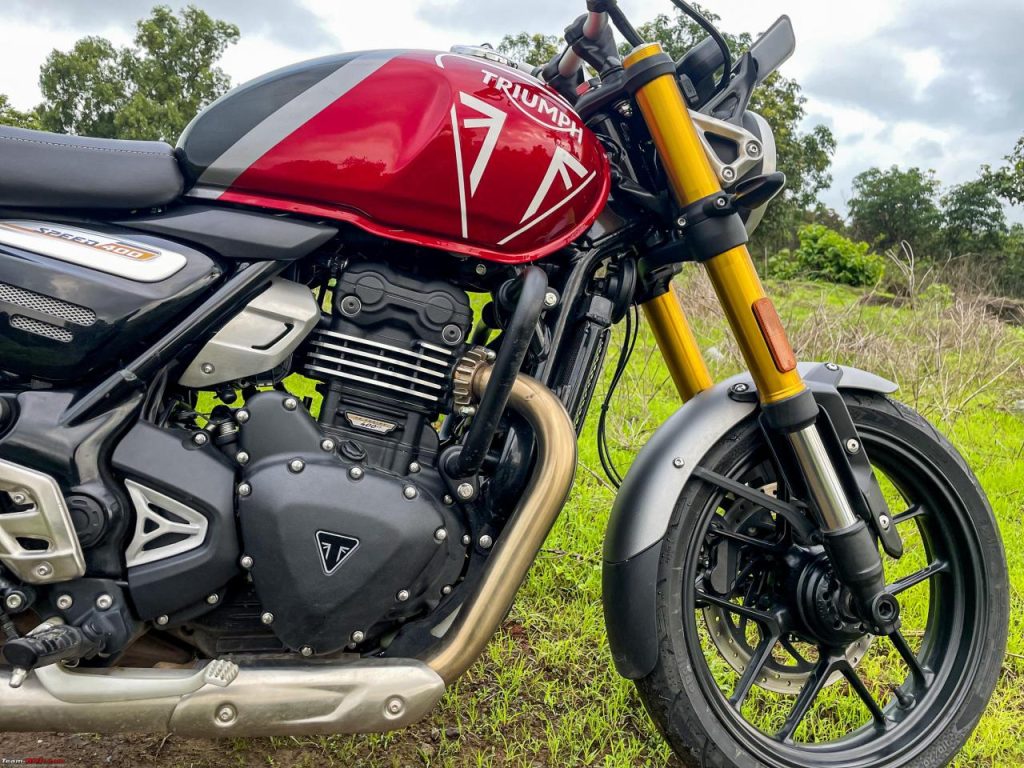Here’s a concise breakdown of what’s going on with Bajaj Auto Ltd (Bajaj), KTM, and Triumph in India:
What’s Been Announced
Bajaj Auto has confirmed that it is developing smaller-capacity engines for future KTM and Triumph motorcycles in India — specifically models that come in below the 350 cc threshold.
- The reason: from 22 September 2025, India’s Goods & Services Tax (GST) regime now classifies motorcycles differently: bikes up to 350 cc attract 18% GST, whereas those above 350 cc draw 40%.
- Bajaj’s Executive Director, Rakesh Sharma, indicated that Bajaj, along with KTM and Triumph, is reshaping their portfolio to “take advantage of the lower GST rate” for sub-350 cc models.
- It is suggested that the engine for Triumph may be derived from the existing 399 cc unit, but with a smaller bore to bring it under 350 cc, likely with slightly lower peak output to qualify for the lower tax band.
Why This Move Makes Strategic Sense
- Tax Advantage: With the new GST slabs, staying below 350 cc gives a large cost benefit (18% vs 40%). For models currently at or above 350, that’s a major cost/price disadvantage.
- Maintaining Competitiveness: The mid-capacity segment (300-350 cc) is heating up in India, thanks to strong demand and attractive price points. By offering premium brand bikes in that segment, Bajaj/KTM/Triumph can appeal to aspirational buyers who might otherwise go for more mass-market bikes.
- Supply and Production Synergies: Since Bajaj already manufactures for KTM (and by extension works with Triumph via their partnership), re-engineering an existing engine (downsizing) is likely to be less costly than developing a wholly new platform. Some reports hint that the new engine will be based on the current 399 cc unit.
- Preserving Brand Value: By staying in the sub-350 cc but premium category, brands like Triumph can retain their premium image while making the bikes more affordable locally. One article suggests the new, smaller Triumph engine will “deliver roughly the same power and torque as the existing 400cc platform” to avoid compromise.
What’s Still Unclear / To Watch
- Exact Displacement and Specs: Bajaj has not officially announced the exact cc number or power/torque specs for the new engines. We have only speculation that it will be “under 350 cc” and likely derived from 399 cc.
- Which Models and When: Timing and which KTM and Triumph models will get the new engine remain unconfirmed. Will KTM’s 390 series also be downsized, or will it stay as a performance outlier? Some sources suggest KTM may retain its current engine for the performance image.
- Pricing & Launch Strategy: While Bajaj has said it will maintain pricing (despite higher GST for existing bikes) and absorb cost for now, actual pricing of the new models is yet to be confirmed.
- Global vs Domestic Differentiation: It remains to be seen whether the smaller-capacity engine will be limited to the Indian market (for tax reasons), while exports might retain the higher cc versions. Some commentary supports this possibility.
Implications For India’s Bike Market
- For Consumers: This means aspirational brands like KTM and Triumph might become more accessible in India, with bikes that are premium in branding but more affordable in tax structure. If executed well, this could improve value.
- For Competitors: Brands such as Royal Enfield (with its 350 cc models) will face fresh competition from premium players moving into the sub-350 band. It could escalate the innovation/feature war in this segment.
- For The Industry: The move signals the powerful influence of tax policy on product strategy. Engine downsizing, re-engineering platforms, and product portfolio shifts will be more frequent. Also shows how manufacturer partnerships (like Bajaj-KTM-Triumph) can enable agility.
- For Brand Identity: For KTM and Triumph, balancing the premium performance image while moving into slightly more mass-market segments will be a challenge. They will need to ensure the “feel” of the bike stays true to brand expectations, even if capacity drops.
Key Takeaways
- Bajaj confirmed the development of sub-350 cc engines for KTM and Triumph in India, primarily to benefit from the lower 18% GST rate for bikes up to 350 cc.
- The engine for Triumph is likely a downsized version of the current 399 cc motor (smaller bore) with slightly reduced output, though exact figures are not yet revealed.
- Models affected will likely target the sweet spot of 300-350 cc, appealing to riders seeking premium brand and build, but with tax-advantaged capacity.
- While KTM may also follow, it is unclear whether the flagship KTM 390 series will be scaled down; the performance identity of KTM may lead to a different strategic path.
- For India’s market, this is a smart adaptation to tax policy and suggests that the mid-capacity bike segment will become even more competitive soon.

